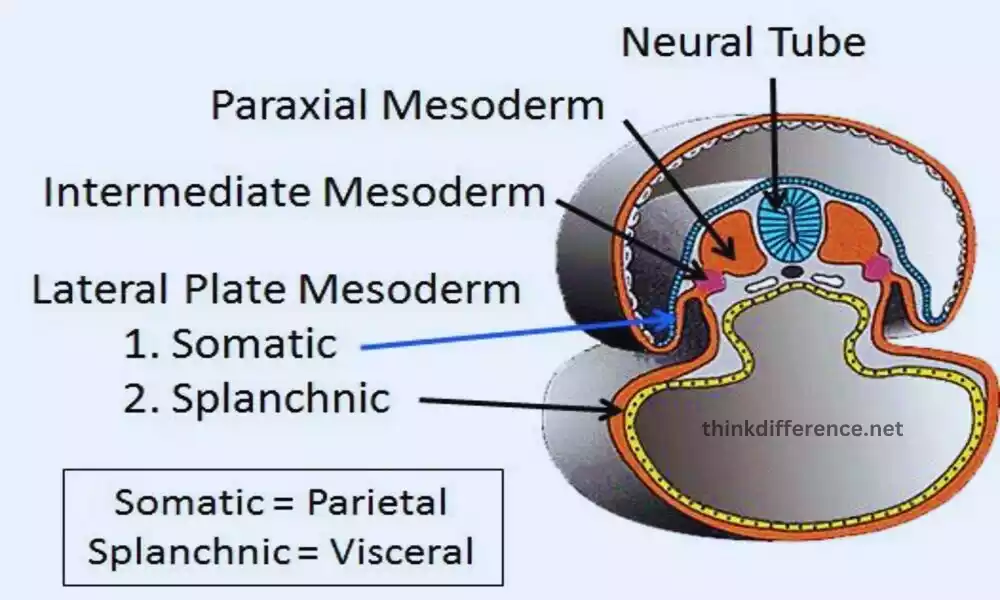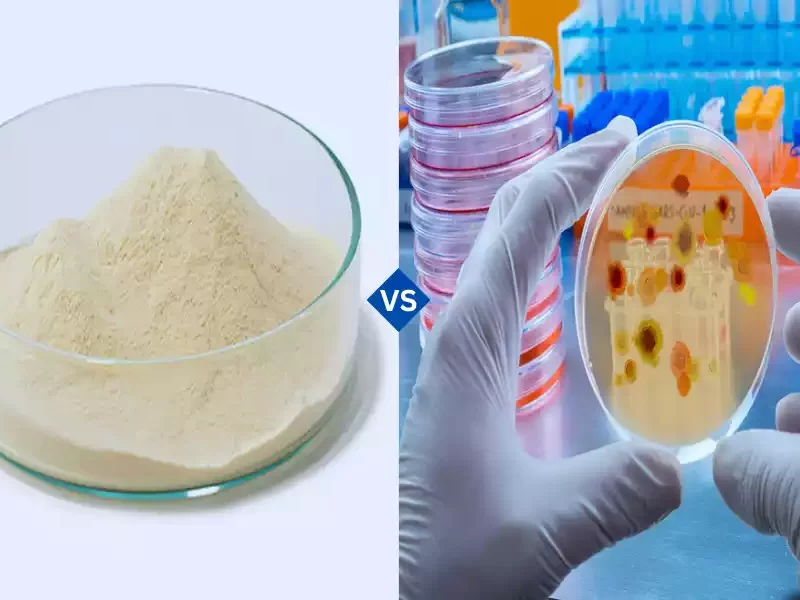Somatic and Splanchnic Mesoderm are two crucial layers in the early stages of embryonic development. These mesodermal layers play distinct but interconnected roles in shaping the human body.
The somatic mesoderm contributes to the formation of the body’s outer structures, including bones and muscles, while the splanchnic mesoderm is responsible for developing internal organs like the heart, blood vessels, and digestive system. Understanding the functions of these mesodermal layers is essential for comprehending the intricate process of human development.
What is Somatic Mesoderm?
Somatic mesoderm is one of the three primary germ layers that develop during embryonic development, the other two being the ectoderm and the endoderm. The mesoderm layer is essential for the formation of various tissues and organs in the developing embryo.
Somatic mesoderm specifically gives rise to tissues that are located in the outermost layers of the embryo and contribute to structures such as:
- Skeletal Muscles: Somatic mesoderm plays a crucial role in the development of voluntary or skeletal muscles, which are responsible for conscious movements like walking, running, and lifting objects.
- Dermis: It contributes to the dermal layer of the skin, which is the layer located beneath the epidermis (the outermost layer of skin). The dermis contains various structures, including blood vessels, sweat glands, and hair follicles.
- Connective Tissues: Somatic mesoderm also contributes to the development of connective tissues in the body, which provide structural support to various organs and help hold the body together.
- Limb Bud Mesoderm: This type of mesoderm is particularly important in the development of limb buds, which eventually give rise to the arms and legs of the embryo.
The development and differentiation of somatic mesoderm are tightly regulated by various signaling pathways and genetic factors. Understanding the processes involved in somatic mesoderm development is crucial for comprehending how the body forms and for studying conditions related to muscle development and skin disorders.
What is Splanchnic Mesoderm?
Splanchnic mesoderm is another one of the three primary germ layers that form during early embryonic development, alongside the ectoderm and endoderm. The mesoderm layer gives rise to a variety of tissues and structures throughout the body.
Splanchnic mesoderm specifically gives rise to tissues that are located closer to the interior of the embryo and contribute to structures such as:
- Smooth Muscles: Splanchnic mesoderm is responsible for the development of smooth muscles found in various organs, such as the walls of the digestive tract, blood vessels, and certain glands. Smooth muscles are responsible for involuntary movements and functions like peristalsis in the digestive system.
- Visceral Organs: The splanchnic mesoderm contributes to the formation of several internal organs, including the heart, lungs, liver, spleen, and parts of the urinary and reproductive systems.
- Cardiovascular System: It plays a crucial role in the development of the cardiovascular system, including the heart and major blood vessels.
The differentiation and specialization of splanchnic mesoderm are controlled by a combination of molecular signals and genetic programs. The interactions between different layers of the mesoderm and other germ layers lead to the formation of intricate organ systems. Understanding the development of splanchnic mesoderm is essential for comprehending how vital internal organs form and function and for studying congenital anomalies and diseases related to these structures.
Diseases and Abnormalities
Diseases and abnormalities related to somatic and splanchnic mesoderm can result from disruptions or malformations during embryonic development. Here are some examples:
Somatic Mesoderm-Related Conditions:
- Muscular Dystrophy: This group of genetic disorders affects skeletal muscles, leading to muscle weakening and wasting. It can result from mutations in genes involved in somatic mesoderm development.
- Dermatological Conditions: Abnormalities in somatic mesoderm can lead to skin disorders, such as epidermolysis bullosa, a rare condition causing skin fragility and blistering.
- Limb Anomalies: Issues during limb bud mesoderm development can lead to limb abnormalities like polydactyly (extra fingers or toes) or limb reduction defects.
Splanchnic Mesoderm-Related Conditions:
- Congenital Heart Defects: Problems in splanchnic mesoderm development can result in congenital heart abnormalities like ventricular septal defects, where there is a hole in the heart’s septum.
- Smooth Muscle Disorders: Abnormalities in the development of smooth muscles from splanchnic mesoderm can lead to conditions like Hirschsprung’s disease, which affects the smooth muscles of the colon, causing intestinal blockages.
- Visceral Organ Abnormalities: Malformations in splanchnic mesoderm can result in structural abnormalities in various visceral organs, such as congenital liver or lung abnormalities.
- Vascular Disorders: Disruptions in splanchnic mesoderm development can contribute to vascular anomalies and conditions like aortic coarctation, where the aorta narrows.
These conditions highlight the critical role of somatic and splanchnic mesoderm in embryonic development and how abnormalities in their formation or differentiation can lead to various congenital and acquired medical issues. Understanding these processes is vital for diagnosing and treating such conditions.
Comparison table of Somatic and Splanchnic Mesoderm
Here’s a comparison table highlighting the key differences between somatic and splanchnic mesoderm:
| Aspect | Somatic Mesoderm | Splanchnic Mesoderm |
|---|---|---|
| Location within the Embryo | Outermost layers of the embryo | Closer to the interior of the embryo |
| Origins and Specification Mechanisms | Paraxial mesoderm, Notch signaling pathway | Lateral plate mesoderm, BMP signaling pathway |
| Functions and Derivatives | – Skeletal muscles
– Dermis (skin layer) – Connective tissues – Limb bud mesoderm |
– Smooth muscles
– Visceral organs – Cardiovascular system |
| Molecular Signaling Pathways | Notch signaling pathway | BMP (Bone Morphogenetic Protein) signaling pathway |
| Role in Organ Development | Development of voluntary or skeletal muscles, skin, connective tissues, and limbs | Development of involuntary smooth muscles, visceral organs, and cardiovascular structures |
| Clinical Relevance | Relevant in muscle development and dermatological conditions | Pertains to congenital anomalies in visceral organs and cardiovascular disorders |
| Examples of Derivatives | Biceps and quadriceps muscles, dermal layer of the skin | Muscles in the digestive tract, heart, liver, lungs |
This table provides an overview of the key differences between somatic and splanchnic mesoderm, including their locations, origins, functions, molecular signaling pathways, and clinical relevance.
Similarities of Somatic and Splanchnic Mesoderm
The primary similarities between somatic and splanchnic mesoderm are:
- Common Mesodermal Origin: Both arise from the mesoderm layer during embryonic development.
- Contribution to Tissues: They contribute to various mesodermal tissues, although with different functions.
- Roles in Organ Development: Both are crucial for organogenesis, shaping different parts of the body.
- Influence of Signaling Pathways: They rely on molecular signaling pathways to guide their differentiation.
- Clinical Relevance: Understanding both is vital for diagnosing and treating developmental and medical conditions.
Final Opinion
Somatic and splanchnic mesoderm are distinct layers in embryonic development with different functions and locations. Somatic mesoderm contributes to voluntary muscles and skin, while splanchnic mesoderm forms internal organs and smooth muscles. Both layers play essential roles in organogenesis and have clinical significance. Understanding their differences is crucial for comprehending embryonic development and associated medical conditions.



